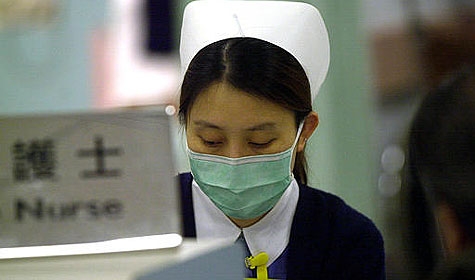
What Hong Kongers should be thankful for when it comes to healthcare
Nearly 60% of Singapore's healthcare spending comes from citizens' pocket but not in HK.
The Health Protection Gap in the Asia-Pacific region could reach USD197 billion in 2020, according to Swiss Re’s latest study, entitled Health Protection Gap: Asia-Pacific 2012, covering 13 markets in the Asia-Pacific region: Australia, China, Hong Kong, India, Indonesia, Japan, Malaysia, the Philippines, Singapore, South Korea, Thailand, Taiwan and Vietnam.
The Health Protection Gap is defined as the difference between the level of healthcare costs which would be required to meet consumer needs, versus the amount that would be available to cover those costs, if society's total healthcare expenditure remained a constant percentage of GDP.
According to the study, the biggest Health Protection Gaps by 2020 are in China, India, Japan and South Korea.
The study notes that even in the more developed economies, which are perceived to have more mature insurance markets, the Health Protection Gap per capita can be substantial, which is at least partly explained by the demand for higher quantity and quality of health and medical services.
Asia-Pacific healthcare costs to reach USD2.7 trillion by 2020
The breakdown of healthcare expenditure varies across Asia-Pacific markets Sources: The World Health Organization; Food & Health Bureau (Hong Kong SAR); Department of Health, Executive Yuan, R.O.C. (Taiwan). In 2010, more than half of the regional governments had to bear over 40% of the total healthcare expenditure, with Japan covering the highest proportion (83%). The other main funding source was out-of-pocket expenses, which ranged from a low of 14% (Thailand) to 61% (India) of total healthcare expenditure.
Hong Kong's out-of-pocket expenses account for nearly 40% of the total healthcare expenses.
Private prepaid plans contributed less than 10% of the total healthcare expenditure for all the markets covered in this report, with the exception of Taiwan which came in at 19%. The total healthcare costs in Asia-Pacific are projected to increase to USD2.7 trillion by 2020, from USD1.2 trillion in 2010.
This figure is based on projections of economic growth, medical inflation and population growth in the 13 Asia-Pacific markets covered. However, there will be faster growth in emerging markets, which currently have lower healthcare expenditure as a percentage of GDP.
Based on Swiss Re's projections, the average real GDP growth rate from 2014 to 2020 for Asia-Pacific will be about 5%. Robust economic growth, especially in the emerging Asian countries, will bring additional demand to the health and medical industry.
"People and countries tend to spend more on health and medical as they get wealthier. With economic growth in Asia-Pacific, especially in emerging markets, rising household income will lead to higher spending on health and medical care," says Clarence Wong, Head of Economic Research & Consulting, Asia-Pacific, Swiss Re.






















 Advertise
Advertise







